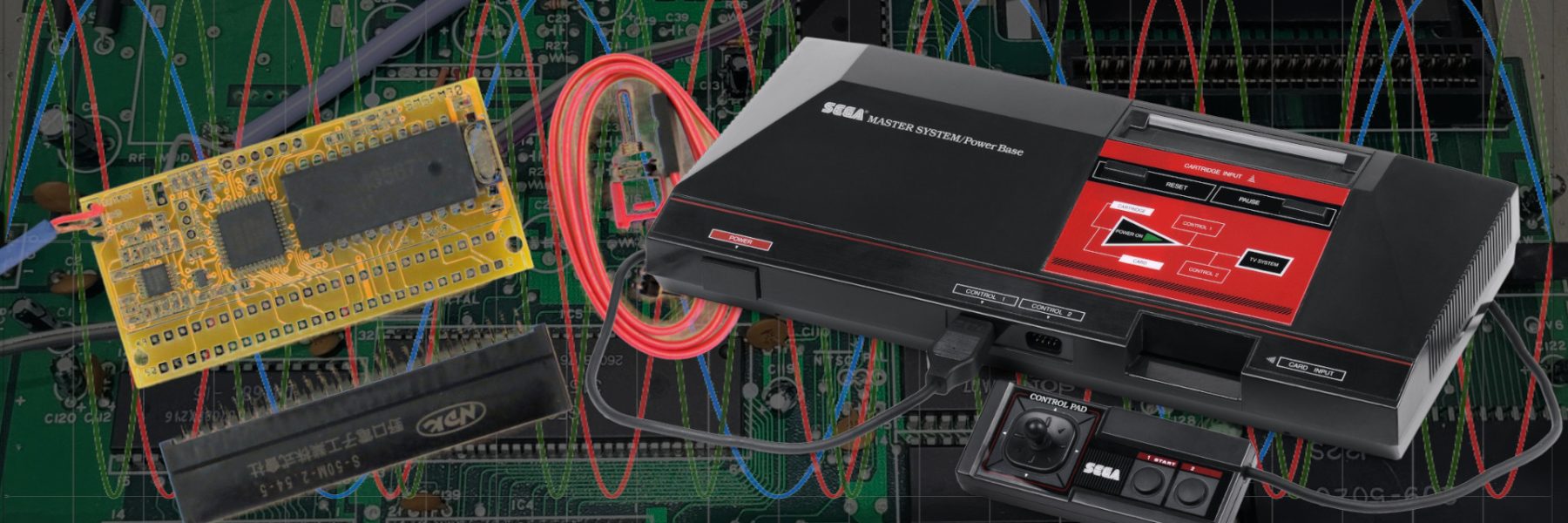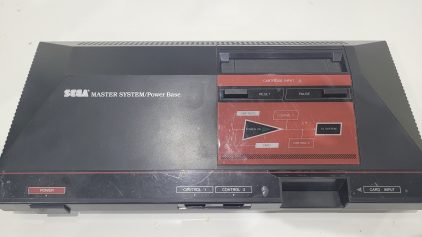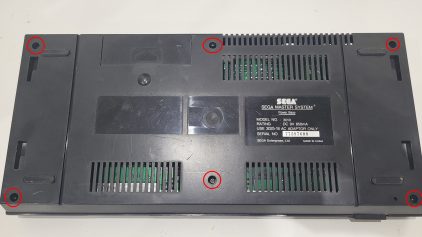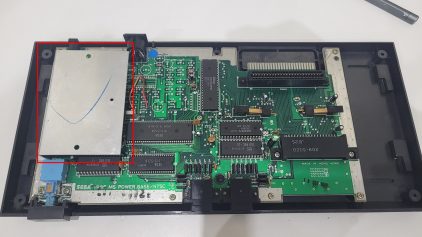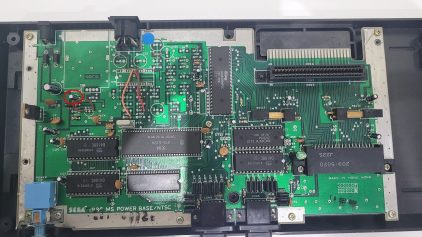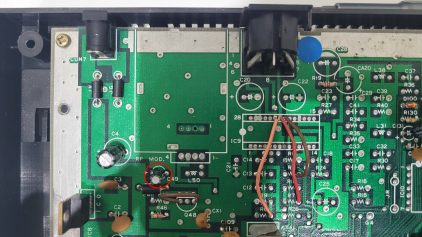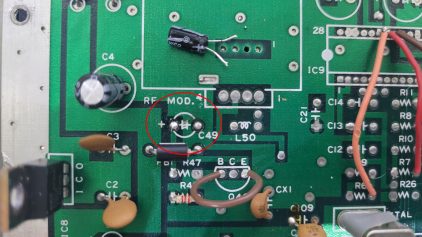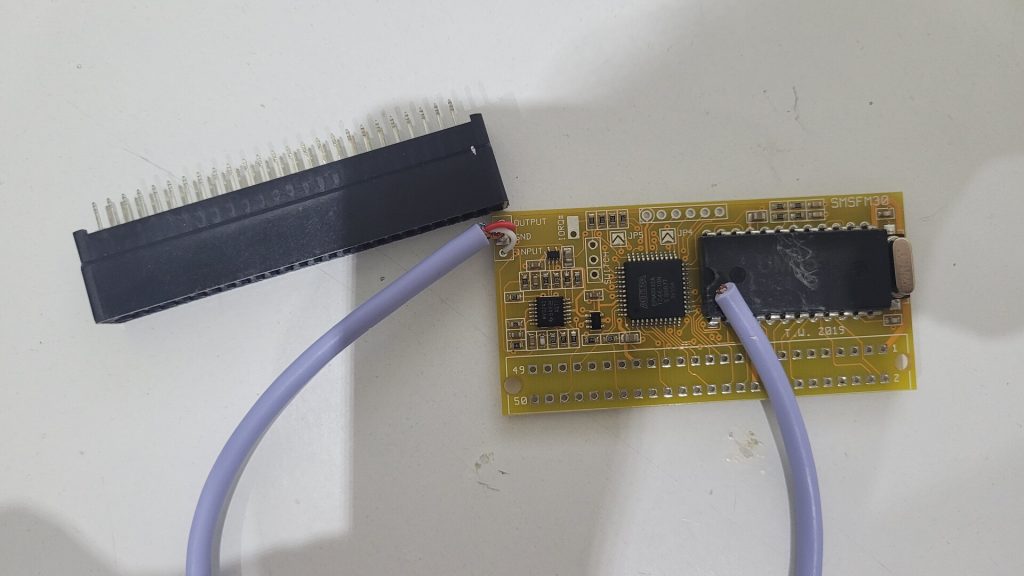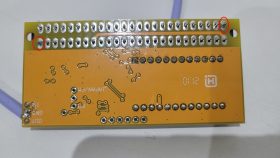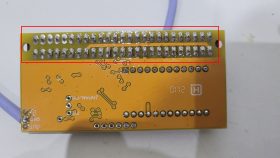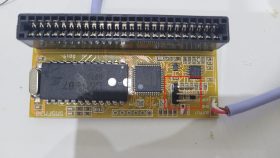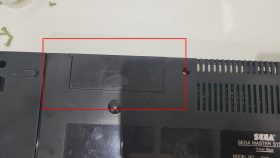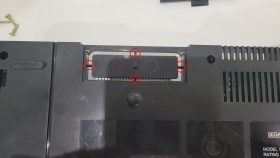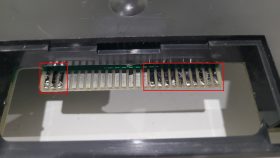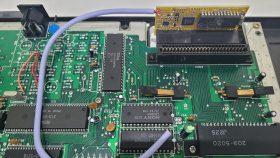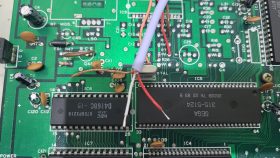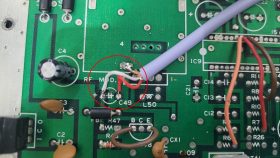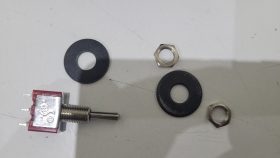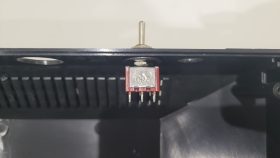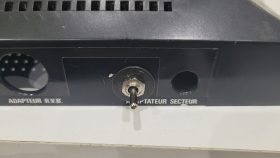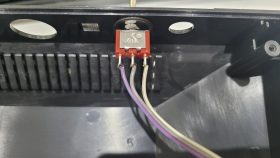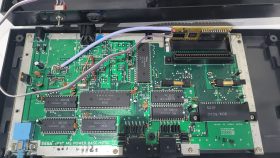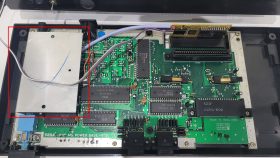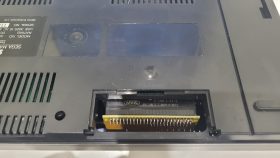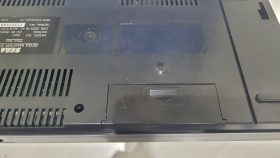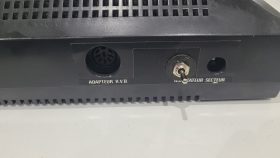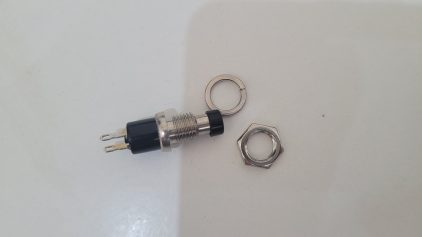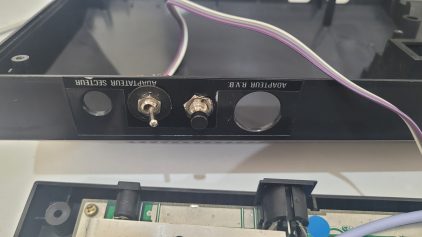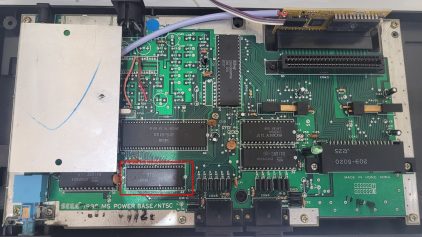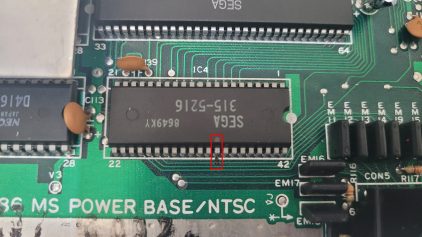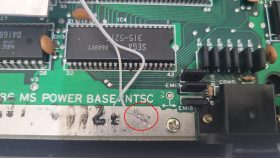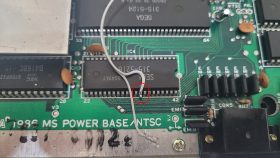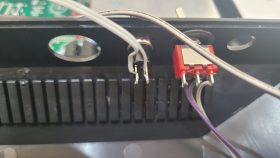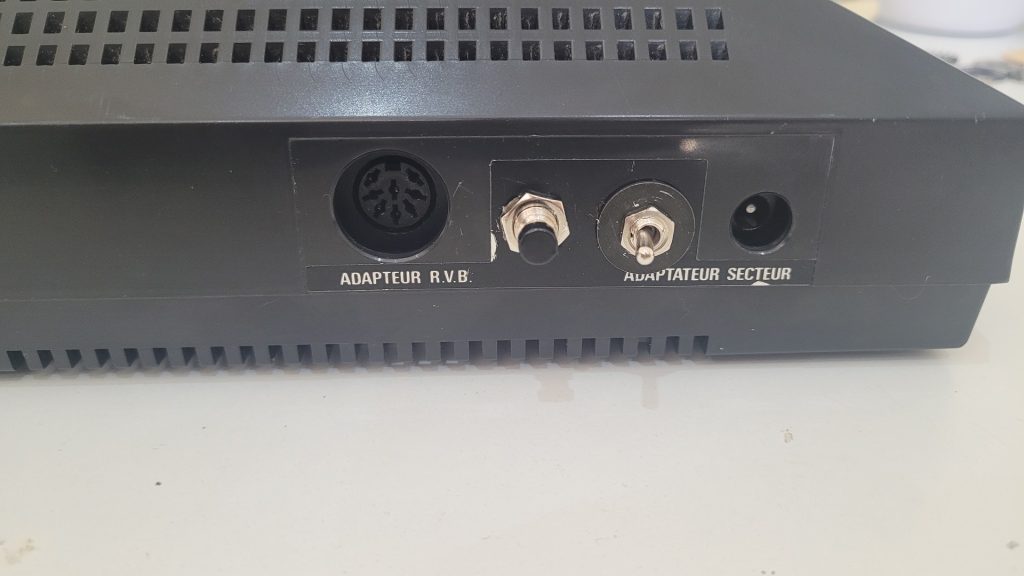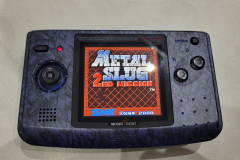It is a well known thing now : the japanese Sega Marks III had additional hardware compared to its US and Europe counterpart (the Master System) : a Yamaha FM sound chip. Not all games take advantage of it, but those that do sound better. Tim Worthington made an expansion board for the Master System which adds exactly the same sound capabilities. As game binaries was most of the time exactly the same across all regions, the European and US versions of games have the same FM sounds abilities as their japaneses counterparts, providing the appropriate hardware is present.
This is the story of my FM module installation based on https://etim.net.au/smsfm/smsfm.html… But also a non planned region mod…
Requirements
First, you may notice that my Master System is the first revision from 1986 “Power Base NTSC”. It has been modded to output RGB and had no RF module.
So far, here is what I used for this mod:
- A Master System 1
- FM Module v3.0 (SMFM30) kit
- A momentary push button and 2 wires (jap region hack)
- 2 black washers
- Some solder + soldering iron
Preparing
The console
Even if the module is plugged into the expansion port of the Master System, the mod needs some soldering, thus I had to open the console.
I removed the metal shield to access the C49 capacitor which have to be removed:
Then I desoldered this capacitor:
The FM expansions module
The kit comes with a connector, a 3 pins rail and some wires. All must be assembled / soldered
My advice to solder the big connector is to first solder one leg on each opposite sides to make sure that it won’t move while soldering all the other legs
The Expansion connector
The connector is located on the back of the console. I had to add solder to some connectors that were in very a bad condition with a lot of cut tracks:
Installing
The installation is pretty simple. I plugged the expansion board first in order to cut the audio wire at a reasonable size. Then I soldered the white wire (PSG audio out) to the + pad and the red wire (audio in, which contains the mixed PSG + FM signals) to the – pad. I soldered the ground to a near by pad that was used by the RF module.
The kit comes with a 3 positions switch allowing to turn the FM module on / off and force (well, tries to…) the region to japanese for the few games that need it in order to play FM sounds.
I used to original RF hole to mount the switch, but I had to use 2 washes because of the hole’s size being too large for the small switch.
I finally soldered the wires to the switch and remounted everything
And it works !… Well for 99% of FM compatibles games. For example, WonderBoy III the Dragon’s trap was not playing FM sound even in FM-JAP mode. This is a “known bug”. This game (and one or two others) check wether the console is a japanese one to play FM sounds. Unfortunately, the FM expansion’s region switch does not work correctly on few consoles, and this is the case for mine…
Japanese region hack
To force the console region to Japan, someone found a “dangerous” way to do it on smspowe.org : https://www.smspower.org/Development/RegionChanging.
I know that an additional wire can be soldered to the IORQ pin of the FM expansion module, but I saw this after I had done this mod.
The trick is that the pin 34 of the 315-5216 chip must be put to ground during the game’s region check. As this hack is documented as “dangerous”, I chose to use a momentary push button and not a switch. The game’s logic for region detection only runs at boot time, so there is no need to bridge this pin to ground all the time. When I launch a game that needs it, I just push the button until the title screen appears, then the FM sound is activated !
I mounted the push button on the existing hole next to the video out connector:
Here is the 315-5216 chip with its pin 34 highlighted :
I soldered two wires from the push button : one on the pin 34 and one on the nearby ground shield:
Here is how the rear of my Master System looks like :

